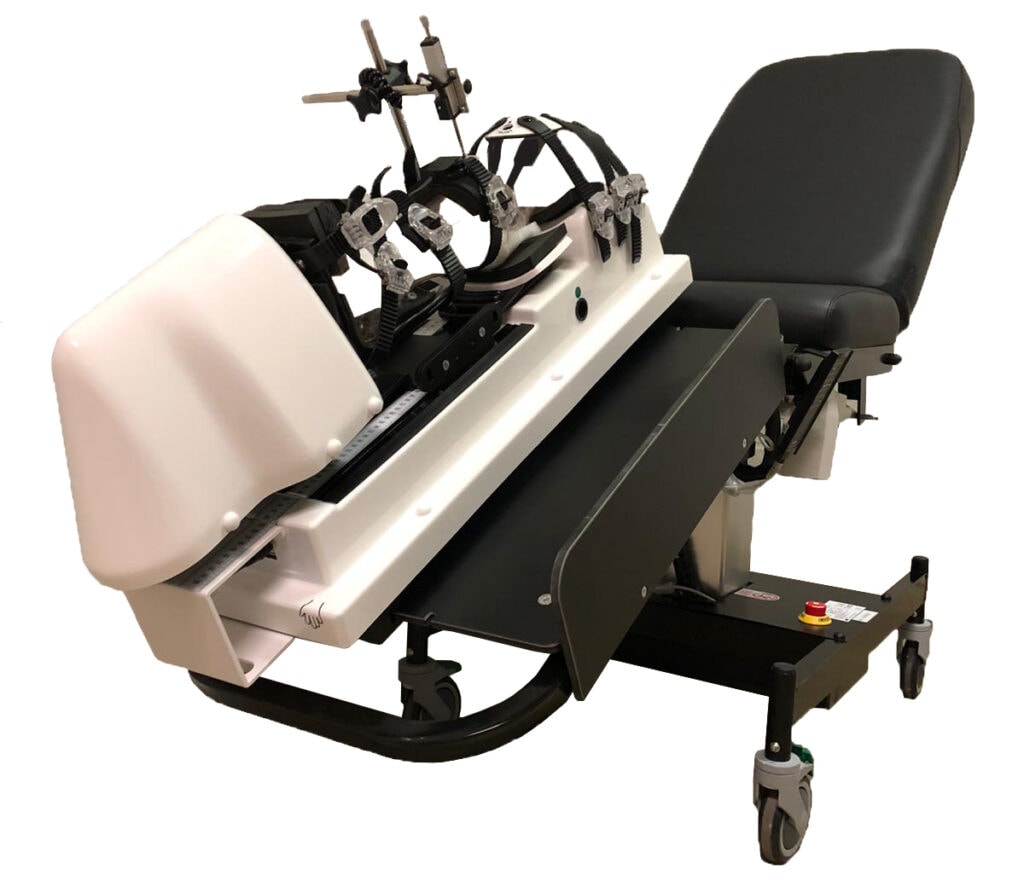Anterior Cruciate Ligament (ACL) injuries represent a significant clinical challenge in orthopedics, primarily due to their prevalence among athletes and physically active individuals. As stipulated in the first sentence of this review, traditional diagnostic methods, including manual laxity tests and magnetic resonance imaging (MRI), often fall short in terms of reproducibility and quantitative accuracy.
The introduction of instrumented laxity measurements through devices like DYNEELAX® offer a promising alternative. This review explores the reliability and effectiveness of these robotic arthrometers in providing precise knee laxity measurements, essential for both diagnostic and post-surgical assessments.
Background and Significance
Knee laxity testing is a cornerstone in diagnosing ACL injuries and evaluating the integrity of the ligament, particularly after surgical intervention. Traditionally, these assessments have been somewhat subjective, relying heavily on the clinician’s experience and technique sensitivity, which can lead to variability in results. The introduction of instrumented measurement devices like the DYNEELAX® robotic arthrometer represents a significant advancement in the field of orthopaedics. By automating the application of force to the knee, these devices minimize human error and variability, providing more reproducible and quantifiable data. Such precision is critical for accurately diagnosing ACL injuries, planning surgical interventions, and assessing the effectiveness of treatments.

Study Overview: Dyneelax Reliability In Measuring Knee Laxity
The study conducted by Nuno Nascimento and his colleagues at Aspetar Clinic aimed to assess the test-retest reliability of the DYNEELAX® in a diverse group of adult volunteers. This group included healthy individuals as well as those with ACL injuries or reconstructions. By focusing on a range of participants, the study sought to validate the use of the DYNEELAX® across different knee health statuses, thus providing insights into its applicability in both clinical and sports medicine settings.
Methodology Highlights
The methodology of the study was rigorous, with a strong emphasis on the standardization of procedures to ensure the reliability and consistency of the results. The knee laxity measurements were performed using the DYNEELAX®, with knee tightening forces precisely controlled at 90N±5N. This standardization is critical, as the accuracy of laxity measurements can be greatly affected by the amount of force applied. Additionally, the study utilized a motorized instrument, which further enhances the precision and repeatability of the measurements by eliminating variations in manual testing.
Results and Implications
The results of the study demonstrated that the DYNEELAX® displays excellent intrarater reliability, with intraclass correlation coefficients (ICCs) ranging from 0.91 to 0.96 for various metrics such as anterior tibial translation and internal/external tibial axial rotations. These high ICC values indicate that the DYNEELAX® provides highly reliable measurements of knee laxity, which are crucial for making accurate clinical decisions. The implications of these findings are significant, as they suggest that the DYNEELAX® can be reliably used in clinical settings to enhance the diagnostic accuracy of ACL injuries and to monitor the ligament’s integrity post-reconstruction.
Clinical Impact
The study’s findings are particularly important for clinicians who rely on precise measurements of knee laxity to guide treatment decisions. By demonstrating that the DYNEELAX®, when used with standardized knee tightening forces, can significantly enhance the accuracy and reliability of knee laxity assessments, this device proves to be a valuable tool in the clinical management of ACL injuries. It supports enhanced clinical decisions, paving the way for more effective treatment strategies and better patient outcomes.
Conclusion
This comprehensive review confirms the DYNEELAX® robotic arthrometer as a highly reliable and effective tool for assessing knee laxity in various patient scenarios. With its ability to provide standardized, accurate measurements, the DYNEELAX® is an invaluable asset in the diagnosis and management of ACL injuries. As the field of orthopedics continues to advance, the integration of such precise diagnostic technologies will be crucial for improving clinical practices and patient care.
Conclusion
The integration of advanced diagnostic technologies like the DYNEELAX® is pivotal for advancing clinical practices around ACL injuries. Further research should explore its application across broader clinical scenarios to maximize its utility and effectiveness in sports medicine and orthopedic care, potentially revolutionizing the standard of care in knee injury assessment and treatment.







